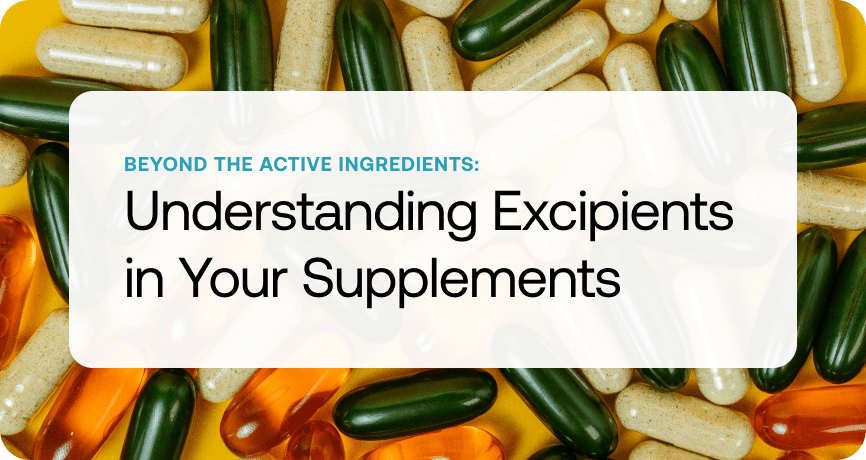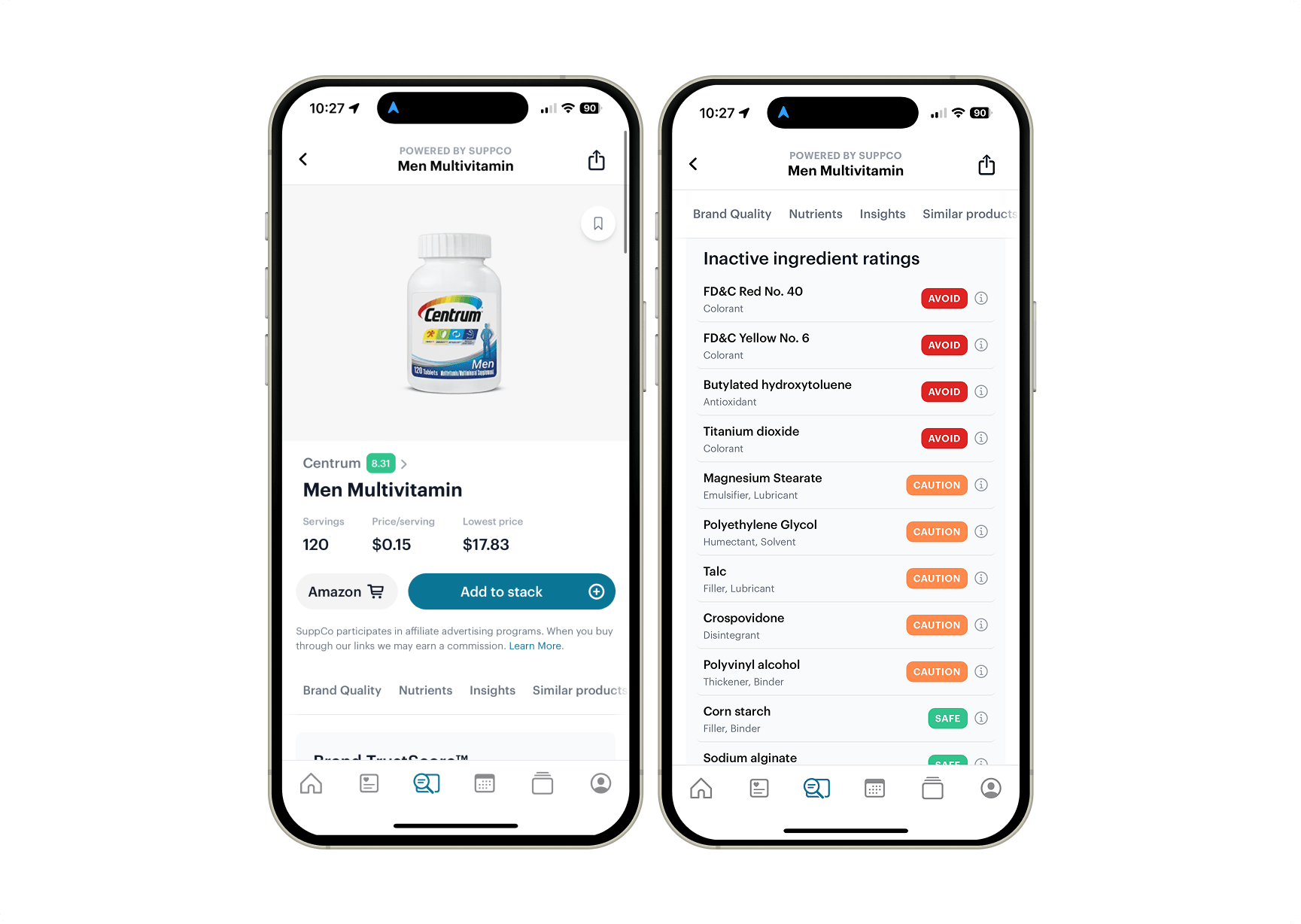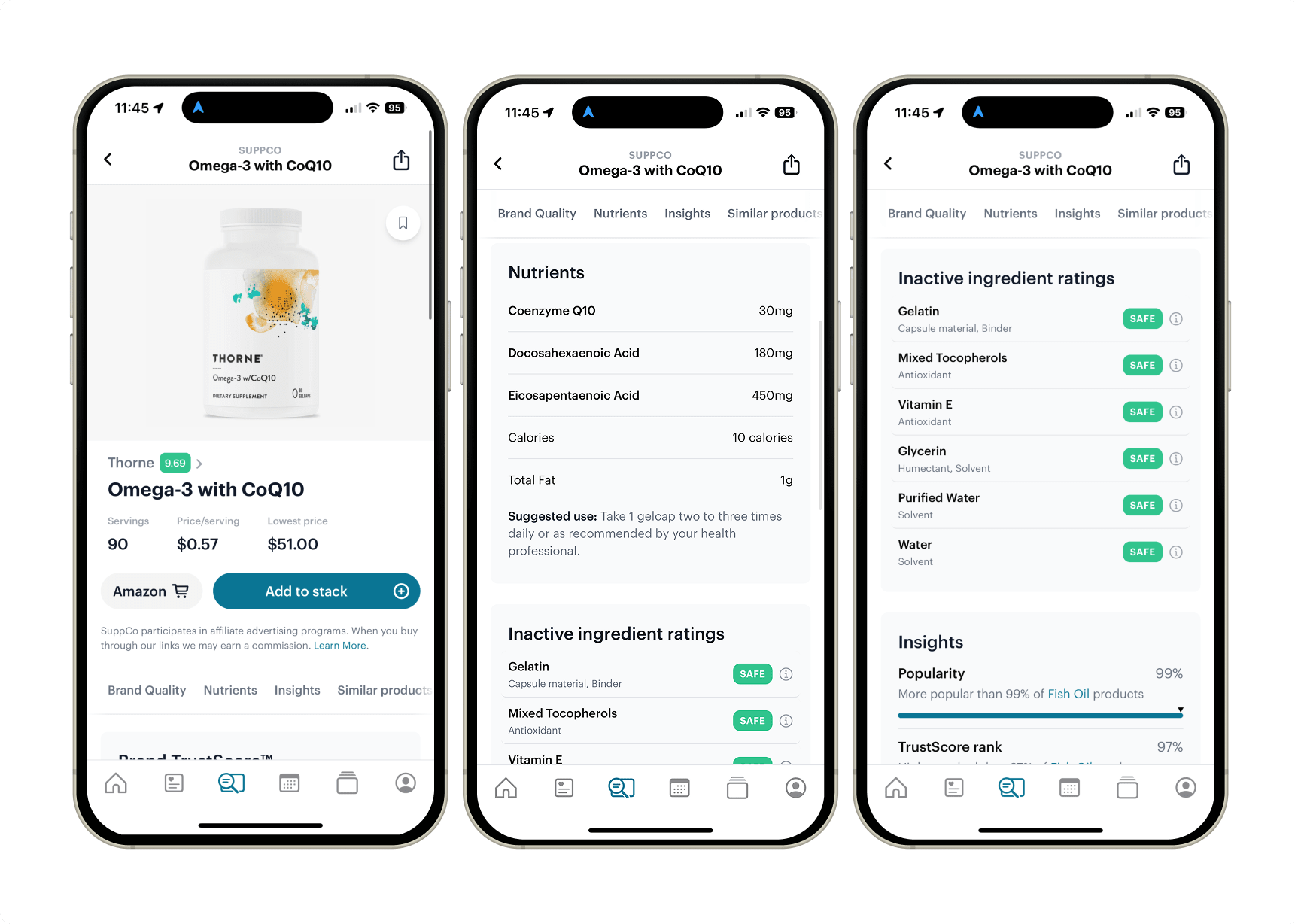Science Corner 01 | Understanding Excipients in Your Supplements
In a supplement world where marketing magic often outshines science, we’re here to cut through the noise. Each week, we’ll translate complex research into bite-sized insights about what's actually in your supplements and how they interact with your body.
No hype, buzzwords or exaggerated claims; our simple promise to you is straightforward science that helps you make better choices. Because at SuppCo, we believe supplements should work for you, not the other way around.

Beyond the Active Ingredients:
Understanding Excipients in Your Supplements
Have you ever flipped your supplement bottle around and found yourself staring at a list of unpronounceable ingredients? Those mysterious "other ingredients" – known as excipients or inactive ingredients – play crucial roles in making your supplements effective, stable, and usable.
Let's demystify these supporting players and explore why they matter and the risks you need to know about.
The Supporting Cast in Your Supplements
Think of excipients as the unsung heroes of the supplement world. While the vitamin, mineral, or herb gets all the glory (and the front-label billing), these supporting ingredients make it possible for that star nutrient to perform its best work in your body.
Why Supplement Companies Use Excipients
Manufacturing Necessity
Many active ingredients in supplements are incredibly potent and needed in such small quantities that manufacturing equipment simply couldn't process them alone. Imagine trying to consistently measure and distribute a few milligrams of a nutrient across thousands of capsules without additional material – it would be virtually impossible.
Without these inactive ingredients, consistent dosing would be compromised, and manufacturing costs would skyrocket, making supplements less accessible to many consumers.
Common manufacturing excipients include:
Microcrystalline cellulose (a refined wood pulp that adds bulk)
Silicon dioxide (prevents ingredients from clumping)
Magnesium stearate (helps powder flow through machines)
Stability and Shelf Life
Many nutrients are highly sensitive – they break down when exposed to light, heat, or moisture. Excipients act as protective agents, preserving the potency of these vulnerable compounds from manufacturing through shelf life until they reach your body.
Examples include:
Tocopherols (vitamin E derivatives that prevent oxidation)
Ascorbic acid (vitamin C that acts as a preservative)
Cellulose coating (protects against moisture)
The reality is that without these stabilizing ingredients, your probiotic supplement might contain dead bacteria, your fish oil could be rancid, or your vitamin C might be degraded before you even open the bottle.
Absorption and Delivery
Sometimes excipients actively improve how well your body can use a nutrient. This is particularly important with compounds that have naturally poor bioavailability. For instance, standard curcumin (from turmeric) is poorly absorbed, but when formulated with certain excipients, its absorption can increase dramatically.
Other functional excipients include:
Phospholipids (improve absorption of fat-soluble nutrients)
Time-release matrices (control when and where nutrients are released)
Enteric coatings (ensure probiotics reach your intestines alive)
These delivery systems can transform what would be an ineffective supplement into one that delivers measurable benefits.
Consumer Experience
The practical aspects of taking supplements shouldn't be overlooked. Bitter-tasting nutrients can be made palatable with natural flavoring agents. Large or sticky substances can be made into swallowable tablets with appropriate binders and coatings. These considerations directly impact whether people actually take their supplements consistently.

Check out this wild multivitamin example with over 20 inactive ingredients.
The Safety Question
Are excipients safe? The research generally suggests yes, with some important nuances.
Most excipients have that reassuring “Generally Regarded As Safe” (GRAS) status from the FDA, with years of use behind them. But here's where it gets concerning...
Some "helper ingredients" have worried researchers for decades. Red dye #3 was just recently banned after years of safety debates, which makes us wonder: what other common excipients of today might be tomorrow's banned substances?
Titanium dioxide is another that keeps us vigilant. Found in many white tablets, some research suggests it might trigger inflammatory responses with long-term exposure. And it's not alone – several synthetic additives face similar scrutiny.
The quality difference is striking too. Pharmaceutical-grade excipients have much stricter standards than food-grade versions, explaining why premium supplement brands often cost more – they're investing in cleaner (potentially safer) ingredients.
Stay tuned. We will be unpacking different excipient categories soon, helping you become a more informed supplement shopper. Because with what we put in our bodies, knowledge truly is power.
Did you know…
SuppCo now has ratings for inactive Ingredients. You can now access scores on inactive ingredients for over 125,000 products in our database.

We’ve spent the last few months building a library of over 900 excipients each scored based on risk level so that you can have confidence that your products have all of the right, and none of the wrong, ingredients.
Remember that supplements are tools in your wellness journey – understanding all their components empowers you to choose the ones that best support your unique needs.
Your health deserves both knowledge and nuance. Sometimes it's the supporting cast that makes the star shine brightest.
